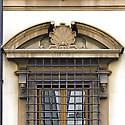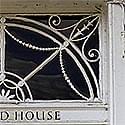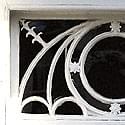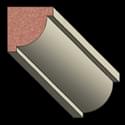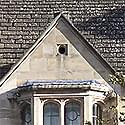
oculus, a circular opening, glazed or unglazed, usually in a dome [Latin: oculus, an eye].
See also eye and keyed oculus.
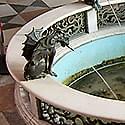
oculus–fountain–aquarium, a fountain, the base of which is a round clear glass panel formed within the structure of the ceiling below.
It is not known how this diverting feature was described by the architect Carl Junker when, in 1856, he created it for the brother of the Emperor of Austria at the fantasy Castello Miramare, outside Trieste. In the days when servants cleaned the glass regularly the fish swimming in the fountain could be observed from below.
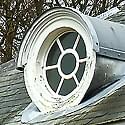
oeil–de–boeuf, a circular or oval window, with or without glazing bars [French: oeil, eye; boeuf, ox, steer].
The Oxford Dictionary of Architecture and Landscape Architecture, 2006, defines oeil–de–boeuf more specifically as an ‘elliptical ox–eye window, often with four key–stones among the dressings, frequently associated with mansard roofs’.
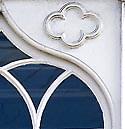
ogee arch, a pointed arch formed by two concave curves above two convex curves; or a pair of opposed cyma reversas [French; ogive, a diagonal rib vault].
The Oxford English Dictionary suggests that the term is ‘apparently worn down from the French ogive’ and quotes from a document of 1611 referring to an ‘Ogive or Ogee in Architecture’. A rib vault is normally a single concave curve, making the derivation difficult to understand.
open–bed pediment, see broken–base pediment.
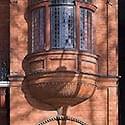
oriel–window, a large bay–window projecting from the face of a wall on an upper storey [Old French: oriole, porch, passage, corridor, gallery].
If we think the derivation doubtful we are not alone. The Oxford English Dictionary tells us that ‘although much research has been expended on the history of this word, and especially on the development of the current use in oriel–window, the sense–history remains in many points obscure and perplexed’.
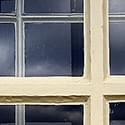
over–painting, the tradition of painting extending window paint onto the glass.
Normally only the top–coat of paint will extend onto the glass, and then only on the outside. The purpose is to create an effective seal between the glass and the putty in order to discourage moisture from attacking the wood. If carried out too enthusiastically this can materially affect the apparent age of the building — over–painted ‘later’ narrow sash bars can appear from a distance very much like non–over–painted ‘earlier’ wider sash bars (see sash bar mouldings). In the example shown the effect is less dramatic; even so the apparent width of the sash bars has increased due to over–painting from two and a half inches (64mm.) to three inches (76mm.).




